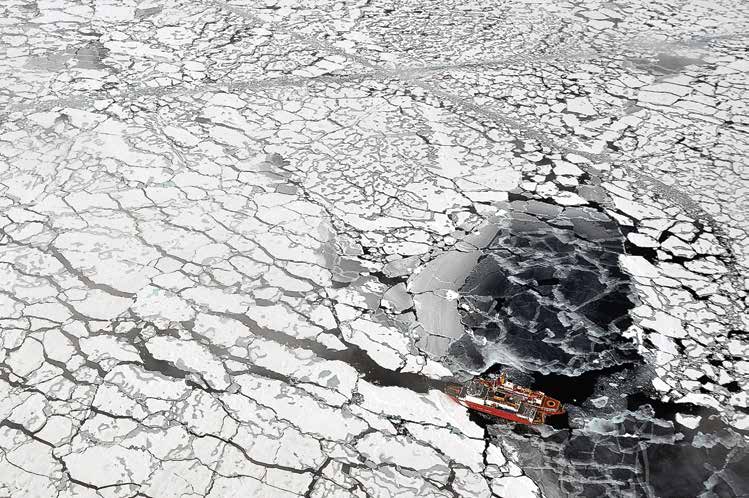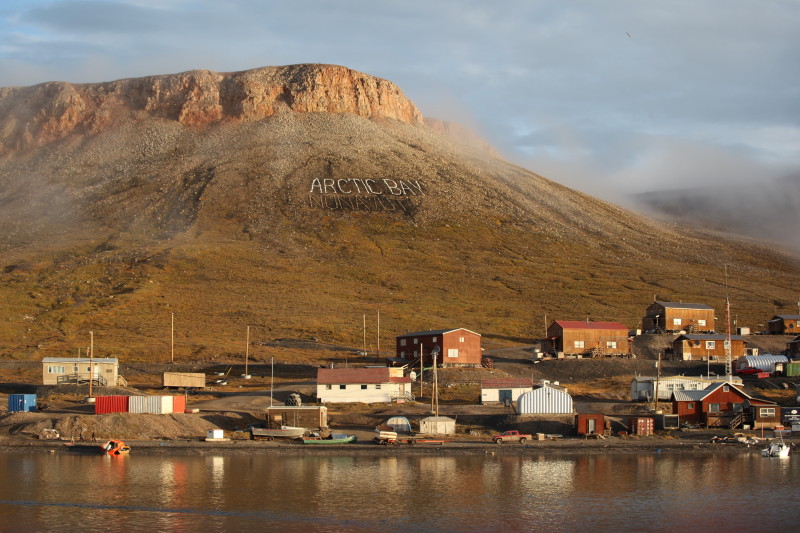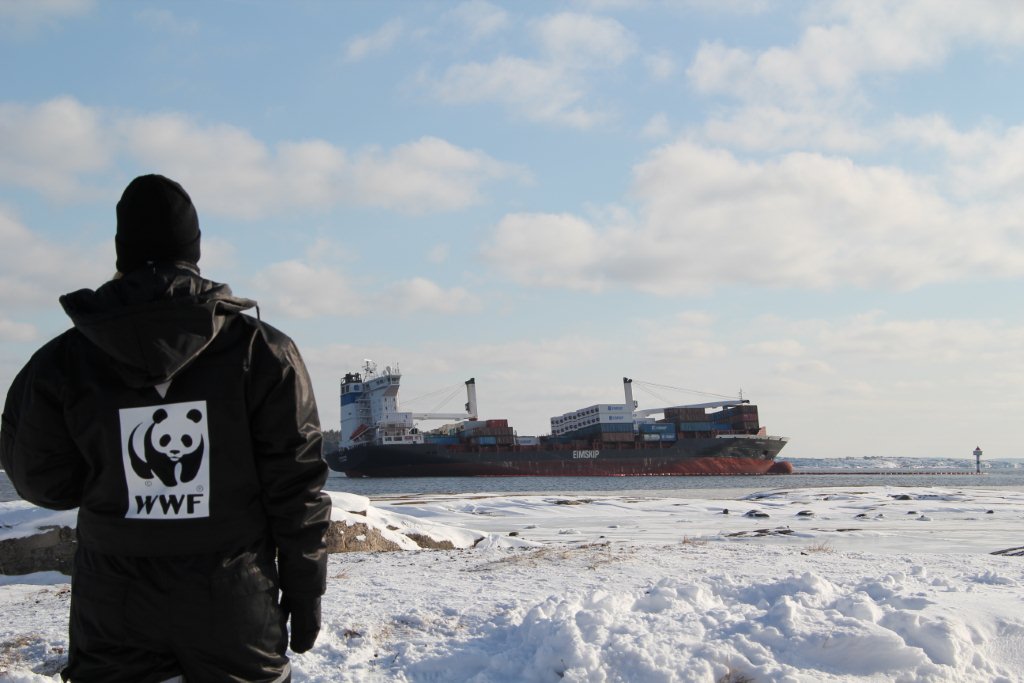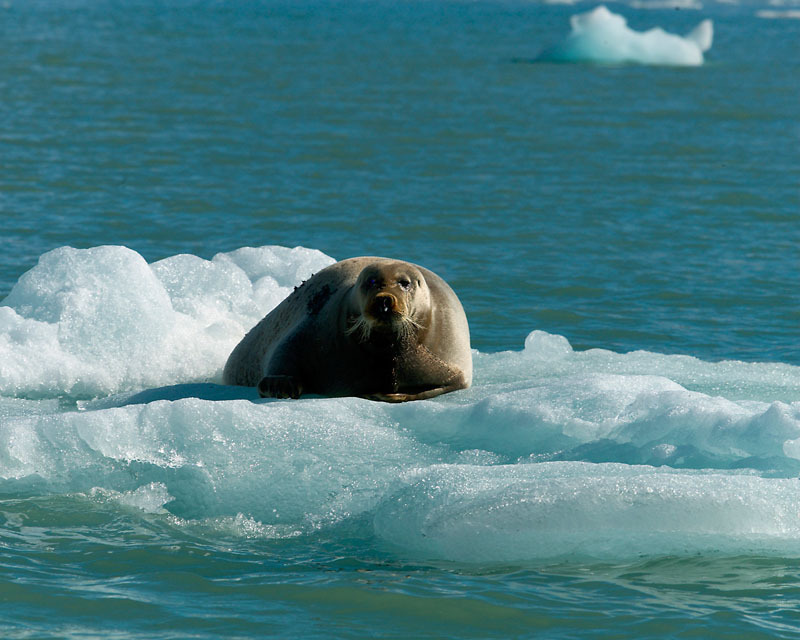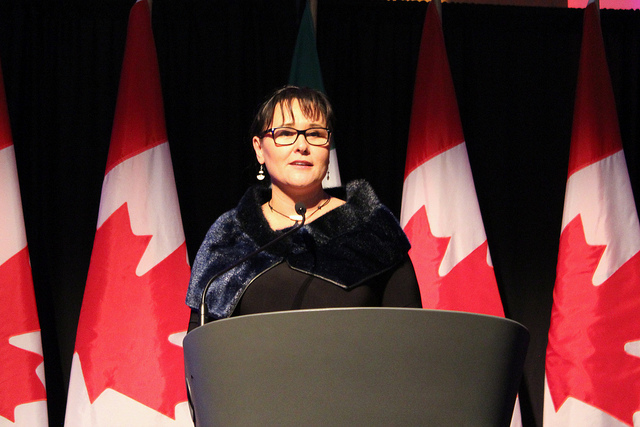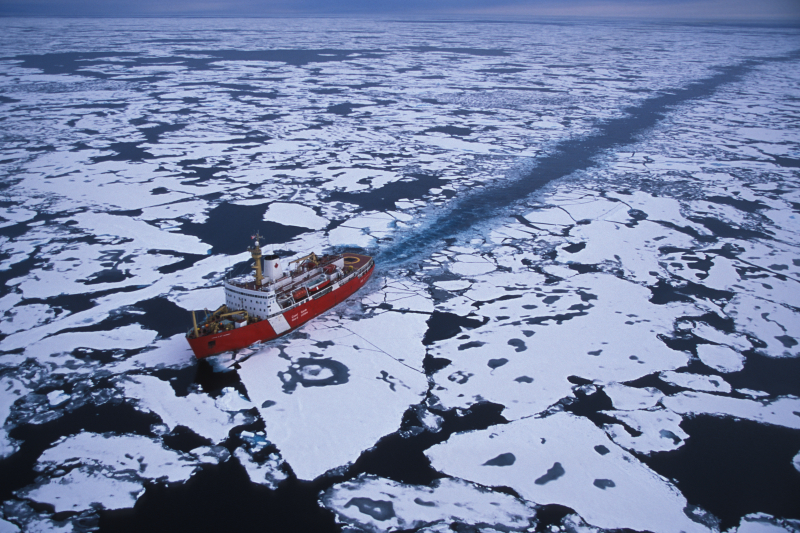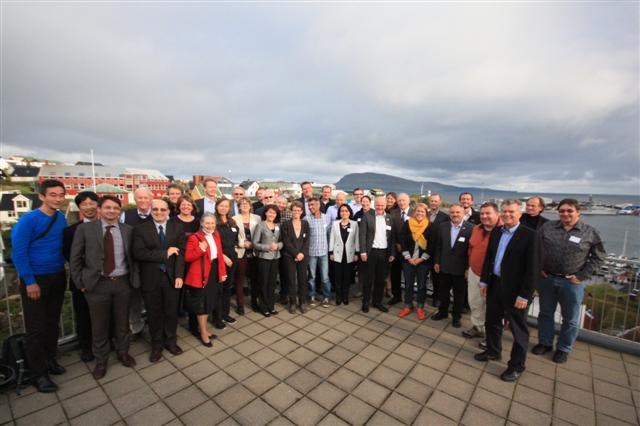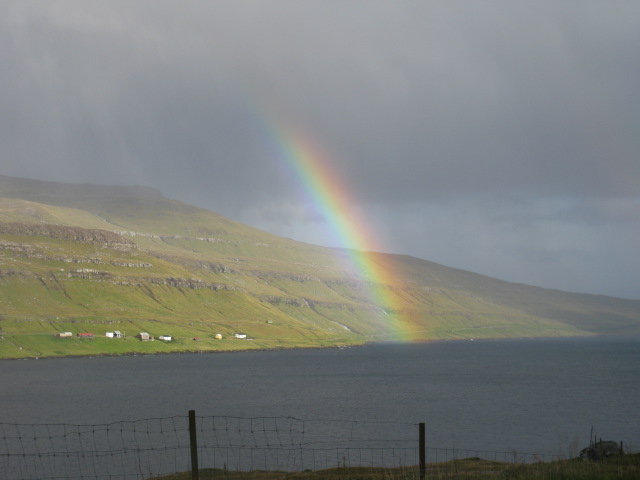
The Canadian Coast Guard Ship Louis S. St-Laurent ties up to the US Coast Guard Cutter Healy in the Arctic Ocean Sept. 5,
2009. The two ships are taking part in a multi-year, multi-agency Arctic survey that will help define the Arctic continental shelf. Photo: Patrick Kelley, U.S. Coast Guard
Admiral Robert J. Papp, Jr., USCG (Ret.) is the US State Department’s Special Representative for the Arctic. This article originally appeared in The Circle 01.15.
When I became the first United States Special Representative for the Arctic in July 2014, I had just retired from nearly 40 years in the United States Coast Guard, finishing my career as the 24th Commandant. Ironically, I both started and ended my Coast Guard service focusing on the U.S. portion of the Arctic. My first assignment was aboard a Coast Guard cutter homeported in Adak, Alaska, in the Aleutian Island chain. During this assignment, I saw first-hand what the Arctic was all about. At the end of my career, I oversaw the completion of the first-ever Coast Guard Arctic Strategy, an achievement I’m very proud of and that has served our country well.
Now I have the great fortune to lead U.S. Arctic diplomacy and prepare for the United States’ chairmanship of the Arctic Council. I feel very privileged to do so at such an important time in the history of the Arctic region. Not since the Cold War has there been such a focus on the Arctic and the critical role it plays in the world. The Arctic Council – the only forum focused solely on the circumpolar Arctic – has evolved in encouraging ways to help Arctic governments and residents meet new challenges.
As chair, Canada has done a fantastic job of raising public awareness about Arctic indigenous peoples and their economic needs. We will follow Canada’s leadership and many of its priorities as we take the chair on April 24, 2015. Our chairmanship theme, “One Arctic: Shared Opportunities, Challenges, and Responsibilities,” reflects the fact that although there are many dimensions to the Arctic, in the end it is one region of peace, stability and cooperation.
We see three general sub-themes logically flowing from the overarching theme under which we will organize a number of new initiatives: Arctic Ocean safety, security and stewardship; improving economic and living conditions; and addressing the impacts of climate change.
The Arctic Ocean is still relatively unstudied as compared to the other oceans. We want the Council to support scientific research cooperation through a binding agreement that would reduce barriers to access for ships, equipment, research teams, samples and other logistical issues, and at the same time explore whether a Regional Seas Program for the Arctic Ocean might further cooperation on research priorities and joint efforts. We want to shine a light on the emerging problem of ocean acidification – a direct consequence of climate change that is happening more intensively in the Arctic Ocean than anywhere else owing to its cold temperatures. With the ever-increasing human presence in the Arctic Ocean, we plan to hold tabletop and live exercises among the Coast Guards and rescue services to ensure we are all prepared for the natural and/or man-made disasters that are all but inevitable.
Improving economic and living conditions is a high priority for the United States because all of the Arctic States have citizens living there, albeit in different circumstances. Much of the Nordic Arctic is well-developed; generally speaking, the Saami indigenous peoples enjoy better economic and living conditions than indigenous peoples in the United States, Canada, Denmark/Greenland and Russia. Our communities are largely remote, often poverty-stricken, and lacking in some of the most basic human needs such as access to clean water, indoor plumbing and sewage services, reliable, affordable electricity and fuel, and good jobs. These conditions contribute to physical and mental health problems, and eventually to high suicide rates, especially in men and boys. We hope that all eight Arctic States will join us in exploring solutions to these problems, including testing and deploying new technologies through public/private partnerships, encouraging foreign direct investment to stimulate job growth, and sharing expertise and best practices across our borders.
We all know that climate change is happening faster in the Arctic than in other regions of the world; in fact, the impacts of climate change underlie nearly all human activity in the region. We hope to focus on climate change in our chairmanship in several ways, but most importantly by pressing the Arctic States and the Observer States to reduce their black carbon and methane emissions.
Our country does not contain the largest piece of the Arctic, but we do take the Arctic region very seriously and we look forward to our coming two years in the chair of the Arctic Council.
